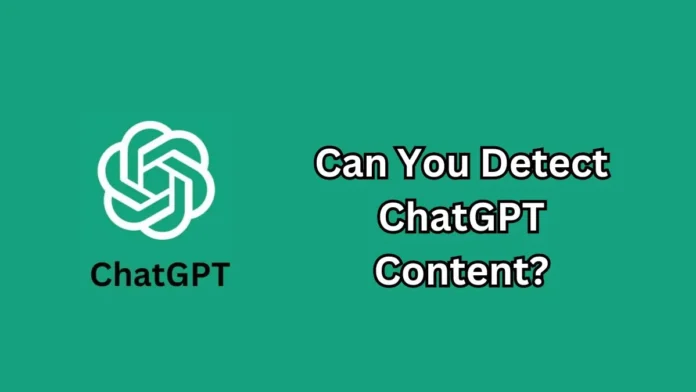Can ChatGPT content be detected? As artificial intelligence technology advances, concerns about the authenticity and reliability of text generated by AI models like ChatGPT have become more prevalent. Let’s delve into this topic to understand the complexities involved.
Understanding ChatGPT
ChatGPT, powered by OpenAI’s GPT (Generative Pre-trained Transformer) architecture, is a state-of-the-art language model designed to generate human-like text based on input prompts. It has gained widespread popularity for its ability to mimic human writing styles and produce coherent and contextually relevant content across various domains.
How ChatGPT Works
At its core, ChatGPT operates by processing vast amounts of text data to learn patterns and relationships between words. Through a process called pre-training, it builds a knowledge base that it can draw upon when generating responses to input prompts. When given a prompt, ChatGPT analyzes the context and generates text that follows a logical flow, drawing from its learned knowledge.
Content Detection Mechanisms
Traditional methods of content detection, such as keyword analysis and plagiarism detection software, face challenges when dealing with AI-generated content like ChatGPT. Due to its ability to generate highly coherent and contextually relevant text, detecting whether content was created by ChatGPT or a human poses significant challenges.
Limitations of Content Detection
One of the primary limitations of content detection when dealing with ChatGPT is its contextual understanding. Unlike keyword-based detection methods, which rely on specific words or phrases, ChatGPT considers the broader context of the text, making it difficult to pinpoint inconsistencies solely based on keywords.
Additionally, ChatGPT can mimic various writing styles, including formal, informal, technical, and creative, further complicating detection efforts. Its adaptability to different writing styles makes it challenging to develop universal detection algorithms that can reliably distinguish between AI-generated and human-generated content.
Evaluating Content
To address the challenge of detecting ChatGPT-generated content, it’s essential to adopt a multi-faceted approach that combines traditional detection methods with contextual analysis and cross-referencing of sources. Human reviewers play a crucial role in evaluating content by assessing its coherence, relevance, and authenticity.
Enhancing Detection Strategies
Efforts to enhance content detection strategies involve collaboration between AI developers and detection technology experts. By leveraging AI models like ChatGPT in content detection processes, researchers can develop more sophisticated algorithms capable of identifying AI-generated content more accurately.
Ethical Considerations
As we navigate the complexities of content detection in the age of AI, it’s essential to address ethical considerations surrounding the use of AI models like ChatGPT. Balancing privacy and security concerns, ensuring transparency in AI use, and holding developers accountable for the content generated are critical aspects of responsible AI development.
Addressing Concerns
To alleviate concerns about the authenticity of content generated by ChatGPT and similar AI models, education and awareness initiatives are crucial. Providing clear policies and guidelines for content creators and users, along with ongoing advancements in detection technology, can help mitigate the risks associated with AI-generated content.
Conclusion
While the question of whether ChatGPT content can be detected remains complex, ongoing research and development efforts aim to enhance content detection strategies and address associated challenges. By embracing collaboration, transparency, and responsible AI development practices, we can navigate the evolving landscape of AI-generated content with confidence.
FAQs
- How accurate are current content detection methods when it comes to identifying ChatGPT-generated content? Content detection methods vary in accuracy, with some struggling to reliably distinguish between AI-generated and human-generated content due to ChatGPT’s advanced capabilities.
- Are there any regulatory frameworks in place to govern the use of AI-generated content? While some regulatory frameworks address broader AI ethics and accountability, specific regulations governing AI-generated content are still emerging.
- Can ChatGPT be trained to generate content that is easier to detect by existing detection methods? ChatGPT’s adaptability makes it challenging to train in a way that facilitates easier detection without sacrificing its core functionality.
- What steps can content creators take to ensure the authenticity of their content in an era of AI-generated text? Content creators can employ a combination of human review, cross-referencing sources, and awareness of AI-generated content to maintain authenticity.
- How do advancements in AI technology impact the future of content detection? Advancements in AI technology present both challenges and opportunities for content detection, necessitating continuous innovation and adaptation in detection strategies.

